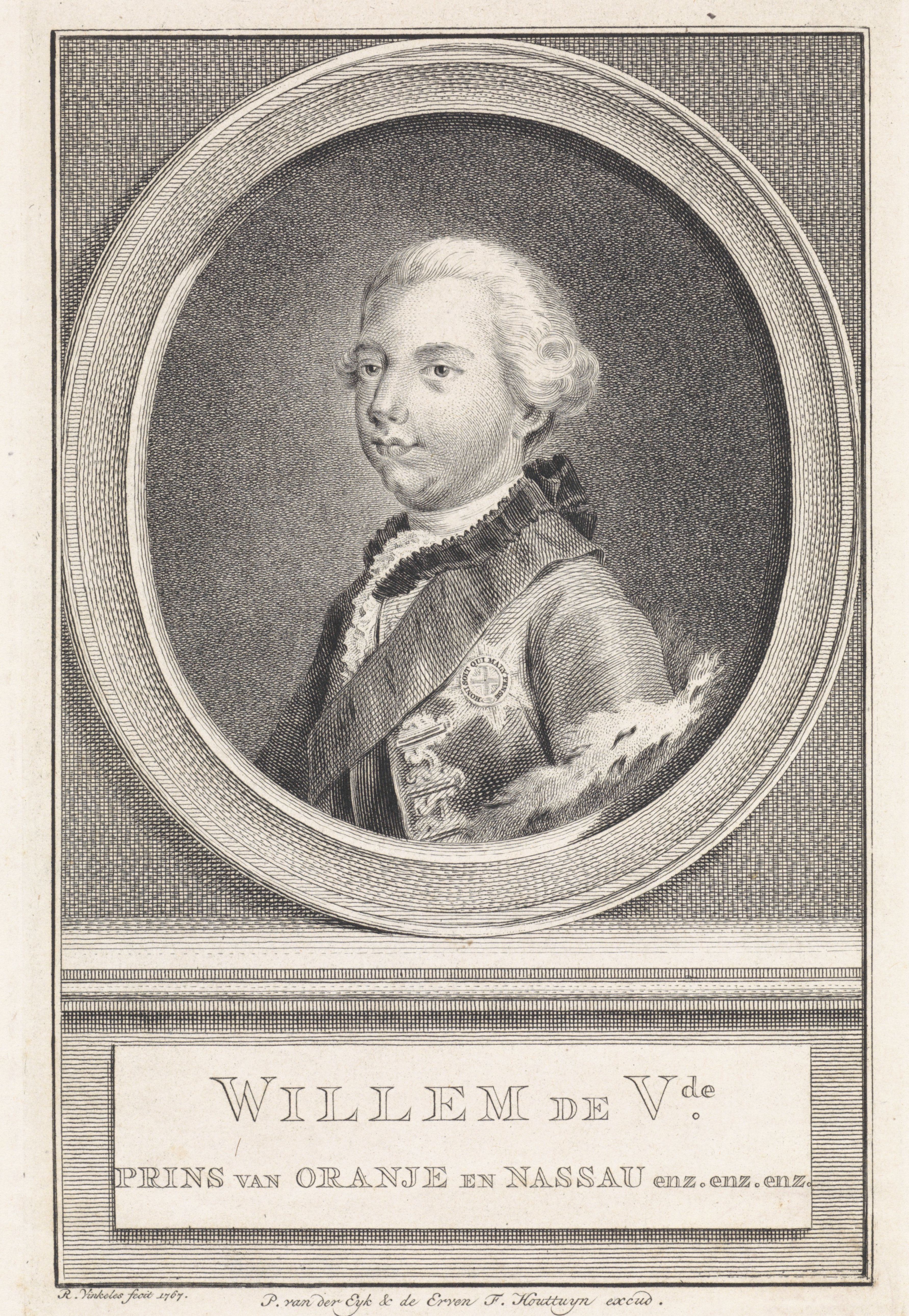Patriots against Orangists: democratic revolution in the Netherlands
By T.M. (Toussaint) Verkoulen
In the 18th century The Netherlands consisted of eight independent regions/provinces, mainly locally ruled by regents that were practically rich families. Only defense and domestic affairs were national matters for the Republic of The Seven United Netherlands. One problem was that the Dutch Republic did not have a constitution, and the regents made up the most of the local (tax)rules. Prince Willem V van Oranje-Nassau (1748-1806) was ‘stadtholder’, the highest rank of authority in the Republic, with the right to appoint civil servants, majors and preachers. He can be described as insecure due to his age, appearance and the political system in the Netherlands in the 18th century, which gave the regents the power to dismiss the stadtholder. At three years old his father Prince Willem IV died, and little Willem V inherited his stadtholdership and fortunes such as Palace Het Loo. Willem V did not have a normal childhood. He was constantly captured with his future stadtholdership when he would come of age. Cartoons depicted him as a fat child looking like a ‘putti’. He was also portrayed as a womanizer and drunkard (which he was clearly not). Several historians sympathize with William V and emphasize his intelligence. A letter shows that he wished he would never have inherited the stadtholdership.
In the second half of the 18th century, Dutch citizens became increasingly dissatisfied and fidgety about unfair government and high taxes. This was partly stimulated by the phenomenon we know as 'the Enlightenment' and other democratic revolutions in parts of Europe. In 1781 a pamphlet was spread ‘to the People of the Netherlands’, with a demand that the hereditary stadholder (and regent class) system is corrupt and should be overthrown in favor of a democratic republic. The people responded to the call for rebellion. A new movement arised calling themselves Patriots revolted against the regents and the stadtholder. On the other side, there were the Orangists supporting the house of Oranje-Nassau.
In 1786, the States of Holland decided to remove Stadtholder William V of his position as commander of the armed forces. This was one of the many steps the Patriots took to undermine the power of Willem V. Also, the temper tantrums and rigidity of Willem V were not in his favour. At that time the figurehead of the Patriots, Herman Daendels, appointed a democratic city council in the little town called Hattem, elected by its own population. As a result Willem V sent his mighty army to little Dutch towns to restore order, but this was a huge escalation in the conflict that became a severe civil war. The support for the stadtholder is then also declining in other provinces. His wife, Wilhelmina van Pruisen (1751-1820), tried to save the power of the Orange house. Under the cover of presenting a petition to the province of Holland about restoring Willem’s power she traveled in 1787 to The Hague. While crossing the country she and her entourage were stopped and arrested by Patriotts. Wilhelmina van Pruisen was sent back and left with a lot of anger, because the requested for permission from the States of Holland for the princess to continue her journey was refused. The so-called arrest at the Goejanverwellesluis is a very important event because afterwards Wilhelmina implored her brother, Frederick William II of Prussia, to consider military intervention. The Prussia army did invade the Republic in 1787 to help the Dutch Stadtholder and his wife regain power, with a lot of success and revenge. A large number of Patriots fled to surrounding countries and Willem V was festively welcomed again. However, this restoration of the stadtholdership was of a temporary nature. The dissatisfaction about the undemocratic government and high expenditure of the stadtholder and regents continues underground.
Eventually, with the help of French revolutionaries and returning Patriots inspired by the French revolution, the Dutch Republic was piece by piece conquered by French invasions between 1793 and 1795. The 'Batavian legion' was welcomed with open and experienced little resistance. At the end of the 18th century the Batavian Republic (1795-1813) is proclaimed. On the 18th of January 1795 the last stadtholder of the Republic of The Seven United Netherlands flew to England by taking a boat on the beach of Scheveningen. In his own words, he did not want to 'stand in the way of freedom'. Eighteen carriages loaded with porcelain, paintings, silver, works of art and chests full of gold drove along the Scheveningseweg to the beach. There they would be loaded onto fishing boats. Willem V was accompanied by his two gifted famous servants named Sideron and Cupid. This does not mean that it would be over with the House of Oranje-Nassau forever. After several years of no government and foreign domination, the Dutch people themselves again opt for an Orange as administrator. This time, the Dutch people choose to appoint Willem I (1772-1843), son of stadtholder Willem V, to become the first king of the Netherlands in 1815.

Portrait of the young Willem V by Reinier Vinkeles, 1767.
Source: NPO NCRV
R.D. Aaronson
